By Erica Baumker, MS,RN, CPNP; Tina Tyler-O’Shea, BA, LS
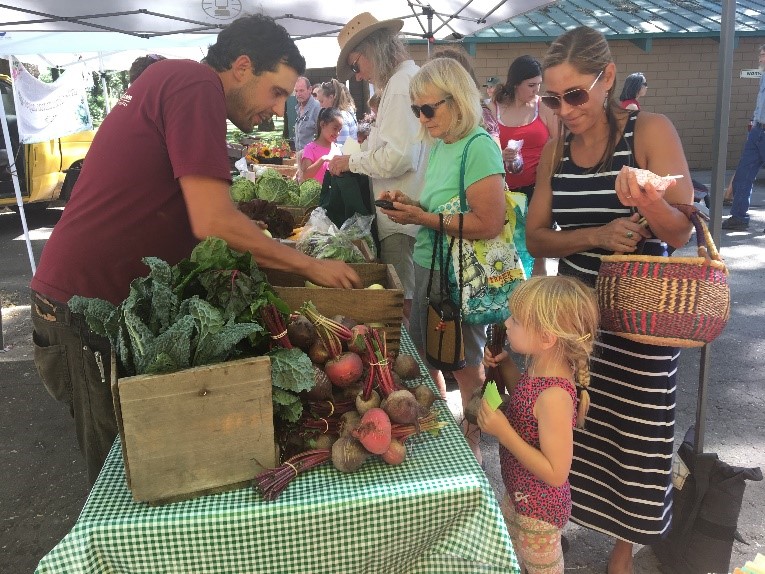
(Photo Courtesy of NCO)
Nutrition is one of the most crucial factors affecting our health. The nutrients we consume directly impact our growth and development from early infancy through adulthood. Our diet plays a huge role in the prevention and treatment of acute and chronic disease. Good nutrition can help a child through the common cold, support an adult as they fight cancer, or even help reverse type 2 diabetes and heart disease.
Eating nutrient-dense foods from the garden, farmer’s market or grocery store leads to strong immune systems and healthy development, but poor choices can lead to unhealthy outcomes. Over the past several decades, there has been an increase in the availability and consumption of highly processed, high calorie, low-nutrient foods and beverages. In Mendocino County, 47.6% of children are overweight by the time they are in 5th grade and 52.4 percent of adults are currently overweight or obese and at high risk for complications like diabetes and heart disease. (2019 Community Health Needs Assessment (CHNA), Appendix C)
Although most people acknowledge the importance of a healthy diet, the intricacies of how to grow, choose or prepare healthier foods can seem daunting or out-of-reach. In honor of National Nutrition Month, this article will introduce readers to some of the issues surrounding food and nutrition in our community and guide readers toward improved health with tips and local resources for growing, buying and enjoying nutritious foods.
DATA
Here in Mendocino County nearly 1 in 5 children are “food insecure,” meaning they lack reliable access to affordable, nutritious food. (Healthy Mendocino Indicator: Child Food Insecurity Rate)
Children who are food insecure are at greater risk for developing chronic diseases such as obesity, anemia and even asthma as a consequence of a lower quality diet. Food insecure children are also at risk for behavioral issues and more likely to be diagnosed with hyperactivity and anxiety.
Food access is an essential factor affecting nutrition, but with the wide variety of whole and processed foods available to us, how do we know what foods to choose? Food choice is driven by many factors, including education, family culture, health beliefs, and income level. One thing most people can agree upon is that eating fruits and veggies is important for our health, however many families struggle when it comes to weaving whole fruits and vegetables into each day. The CDC reports that, in the U.S., 12.2% of adults met fruit intake recommendations and 9.3%met daily recommendations for vegetable consumption, respectively (CDC, 2015). Individuals with lower incomes and people of color are also the target of widespread and intentional marketing of unhealthy foods. Here in Mendocino county 86.1% of white children and 43.7% of Hispanic children ages 2 to 17 years old report eating at least two servings of fruit per day. (Healthy Mendocino Indicator: Child and Teen Fruit Consumption)
Take Action
One of the best ways to turn this trend around is to “walk the talk” wherever we work, play, go to school, and live. That means eating more fruits and veggies in our everyday lives. Start small by choosing to buy one or two more fruits and veggies than we normally purchase when we’re in the grocery store, by serving fruits and veggies at neighborhood and family parties, by putting them in the breakroom at work, and by bringing fruits and veggies for snacks during and after our kids’ sports activities. It also means standing up for policies in our towns, schools, and workplaces that are positive for our health.
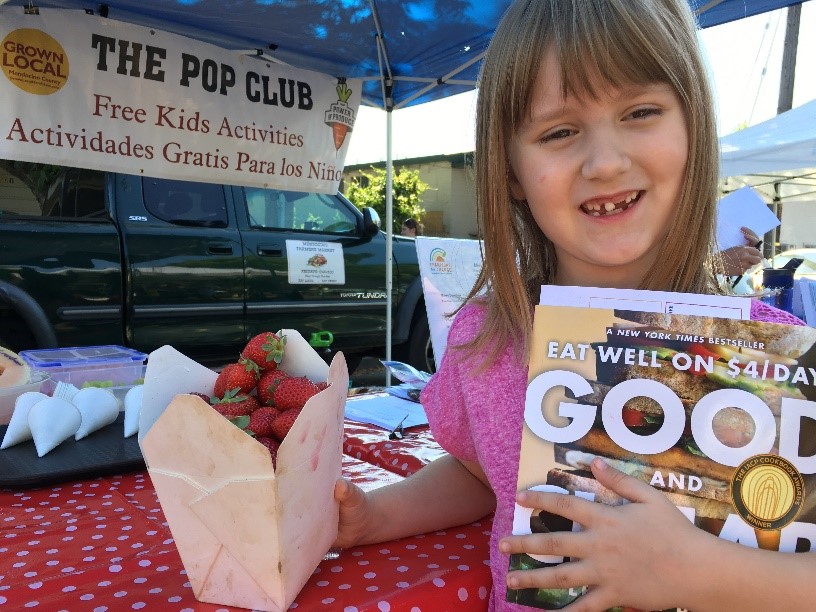
(Photo Courtesy of NCO)
LOCAL PROGRAMS AND RESOURCES
The Supplemental Nutrition Assistance Program (SNAP), previously called the Food Stamp Program and often referred to as CalFresh, is one mode of ensuring food security by providing low-income families with electronic benefits transfer (EBT) funds. In Mendocino County about 80% of families with food insecurity will qualify for CalFresh benefits and over 60% of households receiving CalFresh benefits have children. (Healthy Mendocino Indicator: Households Receiving SNAP with Children) EBT funds can be used to purchase qualifying foods at the grocery store and at the local Farmer’s Market with “double bucks” thanks to the Market Match program.
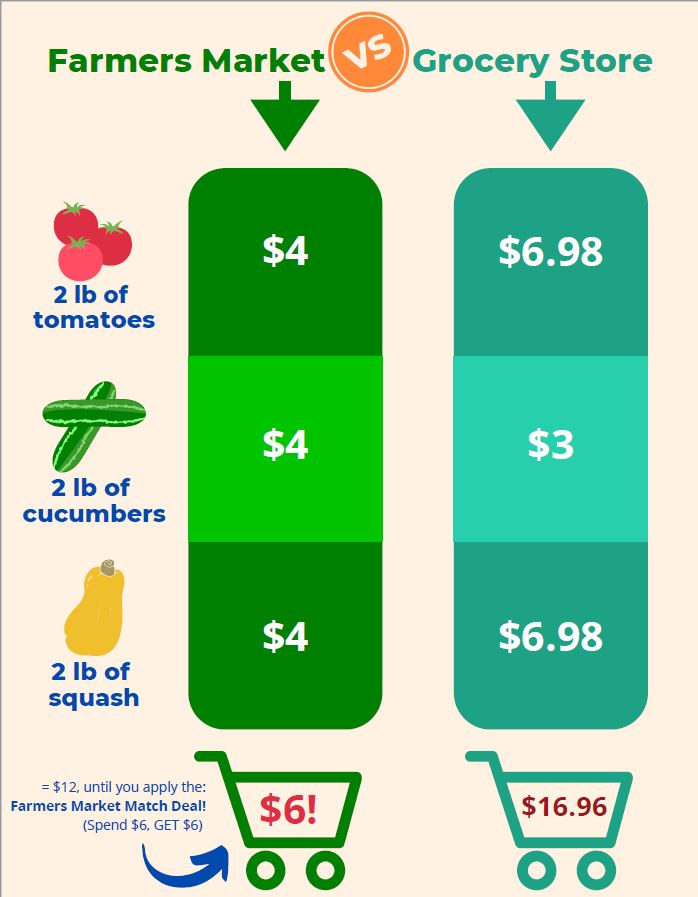
(Photo Courtesy of Mendocino County HHSA)
All seven Mendocino County Certified Farmers Markets accept EBT and WIC coupons. EBT/CalFresh recipients may use their benefits by simply swiping their card at the Market manager table, indicate how much they want to take out, and receive tokens to spend at the market. They also offer an EBT Market Match Program that doubles the number of tokens a customer can spend. For example, if a customer spends $15 in EBT funds, they're given an extra $15 ($30 total) in market tokens to spend on fruits and vegetables. Many markets cap the match at $15, but some offer more. Market Match is the single most effective way to support local farms and make local food more affordable for low-income community members. For more information and a video in English and Spanish about how to use your EBT card, visit Mendocino County Farmers’ Market EBT/Food Stamp Match Program.
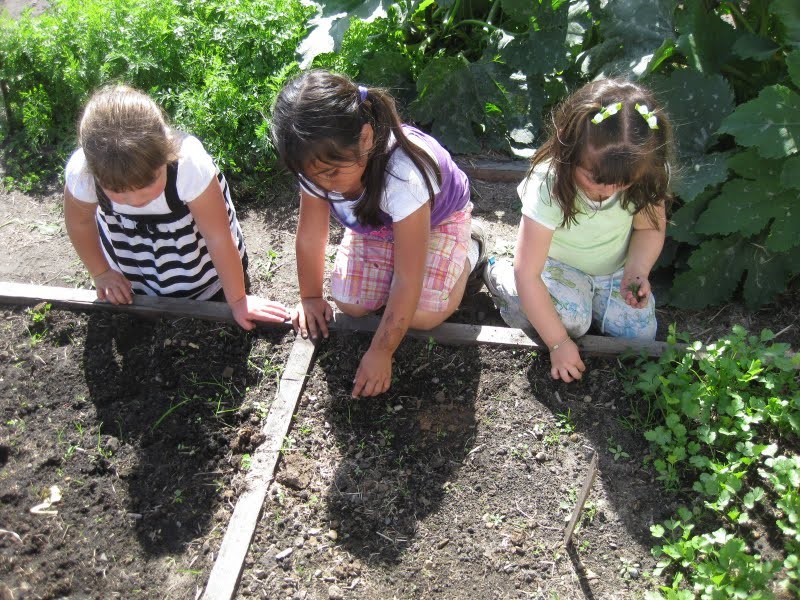
(Photo Courtesy of NCO)
Community gardens are places where people come together to grow a variety of fruits, vegetables, herbs, and flowers. They do this by renting individual or shared plots of land within the community garden. People who rent a community garden plot are responsible for planting, tending, and harvesting their garden as well as maintaining the area around their plot and participating in work parties that contribute to the greater good of the community garden. Community gardens are a wonderful resource for those who cannot grow food at their home, for example lack of space, sun, or limited water access. It can also be a very cost-effective way to increase the amount of fresh produce into one’s diet. In addition to eating healthy and saving money on food, community gardens contribute to a healthy lifestyle by:
- helping to relieve stress and increase sense of wellness
- getting people active, which improves overall physical health
- providing social opportunities that build a sense of community and belonging
- giving people an opportunity to learn and share knowledge on gardening, nature, and cooking
Kids tend to try new things when they’ve had the opportunity to help plant, water, harvest, and prepare fruits and vegetables. Early exposure to the joys of gardening can create healthy habits that extend into adulthood. For more information and to find a community garden near you, visit NCO Gardens Project.
Let’s help ourselves and the rising generation grow healthier and resilient by promoting access to fresh foods, role modeling healthy eating habits and encouraging each other toward better nutrition.
More local resources and information:
- Visit EatFresh.org for recipes and to learn more about the latest nutrition recommendations in English and Spanish as well as videos and resources for CalFresh enrollment.
- Mendocino County Farmers’ Markets, Dates and Times: http://www.mcfarm.org/
- Local Grocers: https://www.mariposamarket.com/ (Willits), https://www.ukiahcoop.com/ (Ukiah), https://www.harvestmarket.com/ (Fort Bragg)
- The Caring Kitchen Project for people with critical health needs: https://www.ncoinc.org/programs/caring-kitchen-project/
TOP 3 TIPS FOR BETTER NUTRITION:
Grocery stores tend to put the freshest foods like fruits, vegetables, meat and dairy in the outside perimeters of the store. By “shopping the perimeter,” you will fill your cart with fresh foods first and hopefully avoid the less nutritious processed foods that fill the center aisles.
Check out this video: Grocery store tour: Shopping the perimeter.
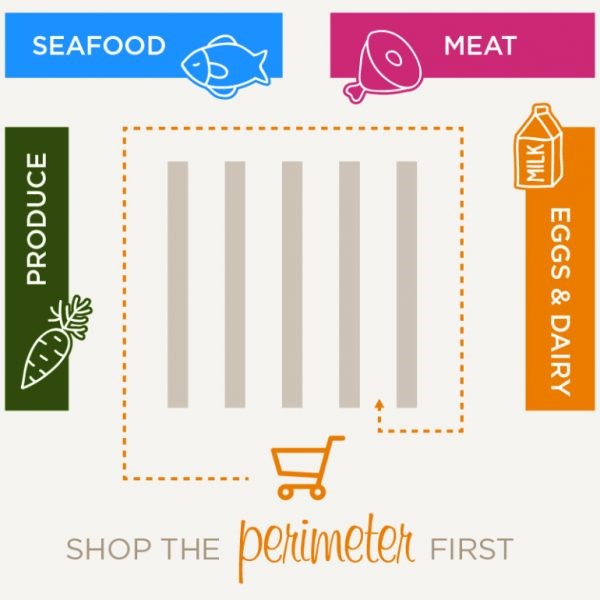
(Photo courtesy of CampShane)
Preparing food creates positive sensory experiences which make children (and adults!) more likely to eat and enjoy healthy foods lifelong. Smelling, tasting, dipping and playing with fruits and vegetables are some ways to build interest and a palate for new flavors. Jump online and you’ll find a wide variety of ideas and resources for creative cooking with kids.

(Photo courtesy of CBC)
Studies show that regular family meals really do contribute to physical, emotional and mental well-being. Quality time spent over a meal not only promotes good eating habits, it gives family members a chance to reflect on the day’s stressors and achievements and can lead to higher self-esteem and lower rates of obesity.
Check out these links for more information on the benefits of sharing a family meal together: The Family Dinner Project, Stanford Children’s Health.
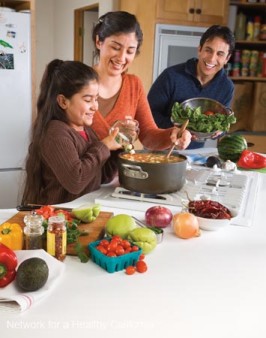
(Photo courtesy of California Department of Public Health)
Resources:
(CDC, 2015): Lee-Kwan SH, Moore LV, Blanck HM, Harris DM, Galuska D. Disparities in State-Specific Adult Fruit and Vegetable Consumption — United States, 2015. MMWR Morb Mortal Wkly Rep 2017;66:1241–1247. DOI: http://dx.doi.org/10.15585/mmwr.mm6645a1
Healthy Mendocino: Mendocino County Indicators
Healthy Mendocino: 2019 Community Health Needs Assessment
Photos:
https://www.campshane.com/grocery-shopping-shop-the-perimeter-of-the-grocery-store/
https://www.cbc.ca/life/food/easy-back-to-school-food-art-ideas-for-your-kids-lunches-1.4803985
###
Erica Baumker, MS, RN, CPNP, is a Nurse Practitioner in Pediatrics and Community Outreach at Adventist Health Ukiah Valley. She also serves our community as a First 5 Mendocino Commissioner and is on the Board of Directors for the Alex Rorabaugh Recreation Center.
Tina Tyler-O'Shea, is a Program Administrator at Mendocino County Health & Human Services Agency
Public Health Branch, Community Wellness.
